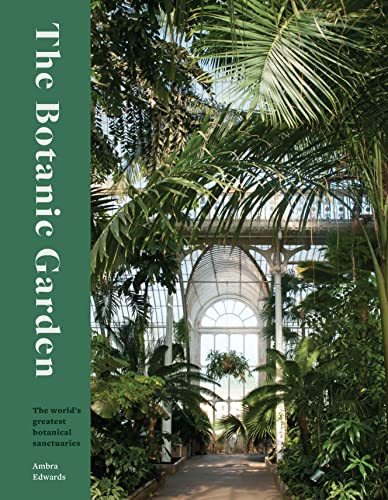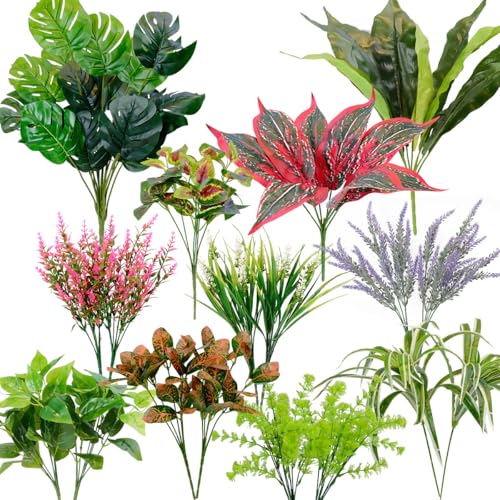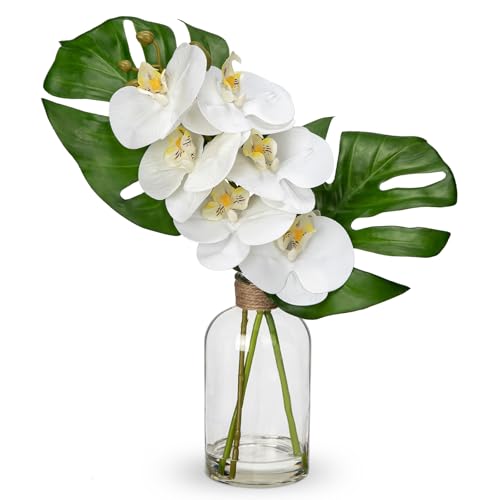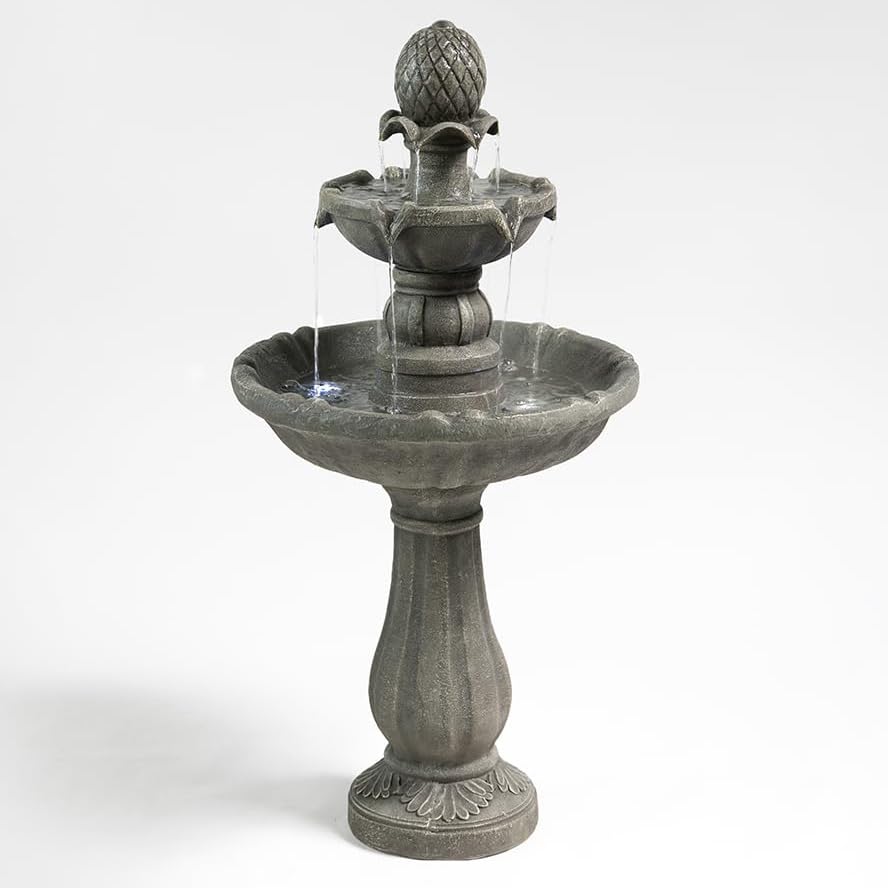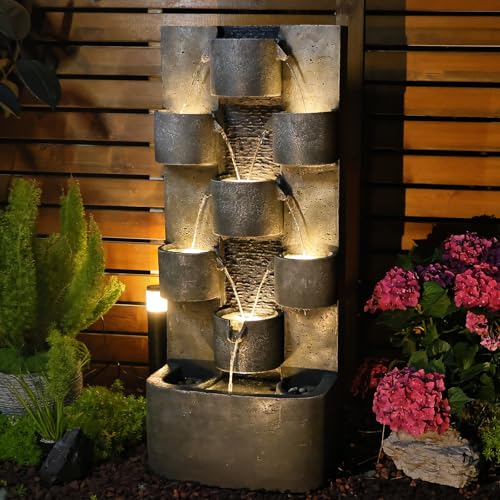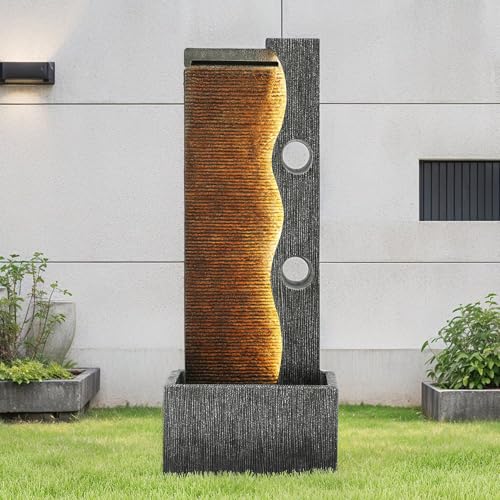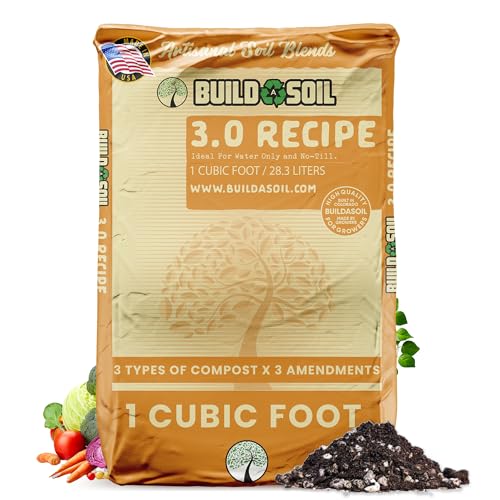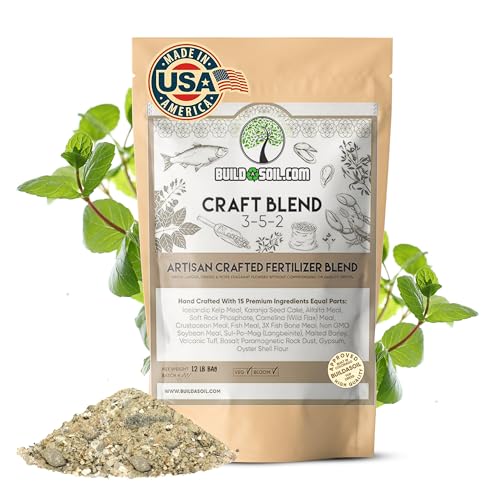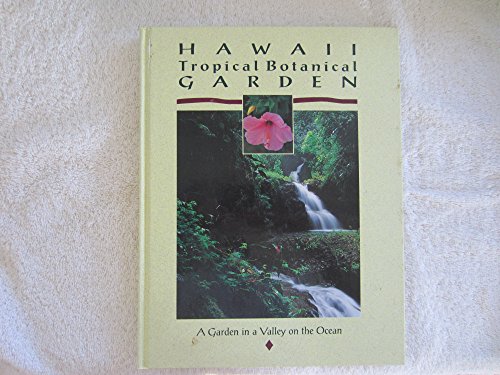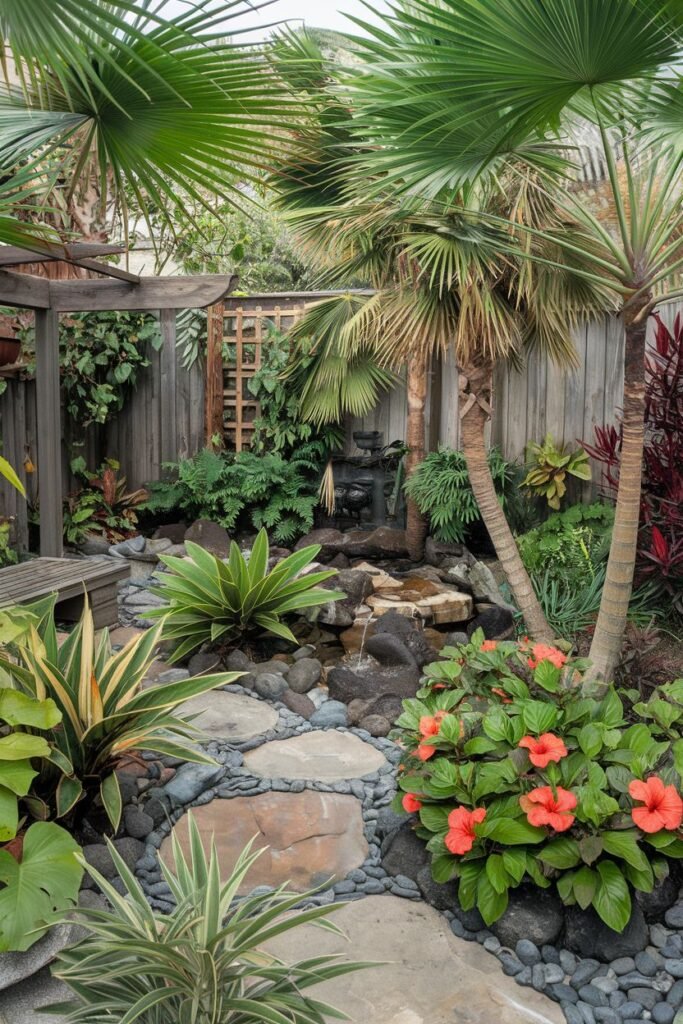
Introduction to Tropical Garden Design
Tropical garden design embodies the vibrant essence of paradise, offering a sanctuary filled with rich textures and vivid colors. Characterized by lush foliage and an eclectic mix of plant species, a tropical garden is often a visual feast that evokes a sense of tranquility and relaxation. Homeowners seeking to transform their outdoor spaces into exotic havens are increasingly drawn to this design style, which not only enhances the aesthetic appeal but also promotes a unique lifestyle experience.

The essential elements of a tropical garden typically include large, bold-leaved plants like palms, ferns, and banana trees, which create a dense canopy of green. Colorful flowering plants, such as hibiscus and bougainvillea, add splashes of vivid hues, creating a dynamic contrast against the lush backdrop. Utilizing a combination of heights and layers in planting design fosters a sense of depth and intrigue, essential characteristics of a well-executed tropical garden. These elements together create an immersive environment reminiscent of far-off tropical locations.
Another key characteristic is the incorporation of water features, such as ponds or fountains, which enhance the soothing ambiance and attract wildlife. When thoughtfully placed among greenery, these water elements augment the sensory experience, contributing to the serene atmosphere that tropical gardens are renowned for. Homeowners can also include pathways that wind through the garden, inviting exploration and discovery. Such pathways can be constructed from natural materials like stone or wood, harmonizing beautifully with the surrounding flora.
Tropical garden design appeals not only due to its visual splendor but also due to its ability to create an enchanting outdoor retreat. As we delve deeper into various design ideas and concepts, it becomes clear how to integrate these features to cultivate a captivating tropical environment in your own backyard.
Choosing the Right Location for Your Tropical Garden
Selecting an appropriate location for your tropical garden is crucial to its success, and several key factors must be considered to create an ideal environment for growth. First and foremost, sunlight exposure plays a vital role in sustaining tropical plants. Most tropical plants thrive in full sun, requiring at least six to eight hours of direct sunlight daily. Therefore, scouting for areas in your garden that are unobstructed by shadows from trees, buildings, or fences is imperative. Assessing your garden space throughout the day will offer insights into how sunlight shifts and helps you make informed decisions.
Secondly, water drainage should also be a priority in your location selection. Tropical plants often prefer well-draining soil that does not retain excessive moisture, as this can lead to root rot and other issues. By observing the drainage patterns in your yard, you can identify spots that are prone to water accumulation after heavy rainfall. Elevated areas or those with sandy soil generally facilitate better drainage, encouraging the healthy growth of tropical flora.
Microclimates are another essential consideration when choosing the right spot for your tropical garden. A microclimate refers to a specific localized climate that differs from the general climate of the surrounding area. Factors such as walls or large trees can create sheltered spots that may retain warmth and humidity, making them ideal for growing tender tropical species. Identifying these unique areas in your outdoor space can significantly enhance the flourishing of more exotic plants that benefit from these conditions.
In conclusion, evaluating sunlight exposure, water drainage, and microclimates are key elements in selecting the perfect location for your tropical garden. By thoroughly assessing these factors, you will lay the essential groundwork for a vibrant and healthy garden that brings the beauty of the tropics to your home.
Selecting Tropical Plants and Flowers
When designing a tropical garden, the selection of plants and flowers plays a crucial role in achieving a vibrant and lush environment. Several tropical plants can thrive in a variety of climatic conditions, each offering unique aesthetics and characteristics. Some of the most popular options include the colorful Bougainvilleas, known for their striking bracts that bloom abundantly throughout the year. Additionally, the exotic Plumeria, often associated with island life, produces fragrant flowers and adds a tropical essence to any garden.
For those seeking a more diverse selection, incorporating lush ferns and palms can introduce different textures and layers to the garden. Varieties such as the Areca palm and the Lady palm are excellent options that can provide height and a canopy-like effect, while ferns contribute softness and greenery beneath taller plants. The choice of tropical plants should also take into account local soil conditions and climate, as some may require more humidity or specific soil types to flourish.
- Elegant 18PCS Plant Arrangement Includes a lush mix of tropical faux greenery and delicate lavender-style flower bushes …
- Harmonious Color Palette The combination of large green monstera leaves, patterned tropical foliage, and gentle lavender…
- Built for Outdoor Use All stems are UV-resistant and weatherproof, designed to last in sunny, rainy, or windy conditions…
- [Premium Faux Plant] – Featuring 2 big monstera leaves and 2 orchid flowers in a dense arrangement, this design is compl…
- [Realistic Fake Plant in Vase] -Artificial leaves and flowers are made from soft, real touch material and flexible fabri…
- [Refreshing & Charming Look] -Amazingly lifelike fake flowers adds an enchanting finishing touch to the plants. This rea…
When layering plants, consider placing taller specimens in the back and shorter ones in front to create depth and visual interest. This layered approach not only enhances design aesthetics but also improves the health of the garden by allowing each plant to receive adequate sunlight. To ensure optimal growth, it’s advisable to conduct a soil test, identify the right plants for your specific zone, and choose varieties that support each other environmentally, fostering a healthy ecosystem.
In creating a tropical garden, the emphasis on selection and arrangement can lead to a stunning display of color and life, transforming your outdoor space into a serene oasis that resonates with the tropical ambiance.
Creating a Focal Point with Water Features
Incorporating water features into your tropical garden design can significantly elevate the aesthetics and tranquility of your outdoor space. From calming ponds to cascading waterfalls, these elements serve as stunning focal points that capture attention and promote relaxation. Water features attract wildlife, create soothing sounds, and add visual complexity, making them an ideal central element in tropical gardens.
When considering water features, various options are available. Ponds can be designed as serene reflections of the sky or as vibrant habitats for aquatic plants and fish. Waterfalls, on the other hand, bring dynamic movement to the garden and can be constructed to flow into a pond or run over rocks, mimicking the natural beauty of tropical settings. Fountains offer a classic option, providing a focal point that invites visitors to appreciate the intricate designs and the calming sound of flowing water.
- Elegant 3-Tier Design – A beautifully structured tiered water fountain outdoor that creates a mesmerizing water flow for…
- Durable & Weatherproof – Made from high-quality materials to withstand outdoor conditions, ensuring long-lasting use.
- Relaxing Water Sounds – The gentle waterfall fountain outdoor effect provides calming sounds to reduce stress and attrac…
- EXQUISITE OUTDOOR FOUNTAIN – Embellished with concrete-effect cylindrical pillars,this fountain creates a captivating wa…
- RELAXING SOUNDS AND ILLUMINATION – Immerse yourself in the mesmerizing symphony of water as it gracefully flows from pil…
- PREMIUM QUALITY AND WEATHER-RESISTANCE – Crafted with premium resin,this fountain ensures enduring quality and resistanc…
- OVERSIZED DECORATIVE FOUNTAIN: Elevate your outdoor space with this 39.4″ freestanding fountain, featuring a handcrafted…
- RELAXING WATER FLOW: Transform your garden or patio into a serene retreat with this outdoor water fountain. The gentle, …
- WARM LED LIGHT ACCENT: Built-in soft warm LED light strip illuminate the flowing water, casting a gentle glow that enhan…
Placement is critical when introducing a water feature into your garden. Ideally, it should be located where it can be easily seen from various vantage points, such as a patio or seating area. Consider the scale of the feature in relation to the garden; a small fountain may be lost in a large yard, while an expansive pond could overwhelm a smaller space. Incorporating diverse planting around the water feature enhances its appeal, integrating colorful tropical plants like hibiscus, bird of paradise, and ferns to blend the water element seamlessly with the lush environment.
Maintenance is also an essential consideration for successful water features. Regular cleaning and ensuring proper water quality are vital to keep your aquatic environment thriving. Consider using natural filtration systems and introduce native plants to help manage algae and maintain balance. With thoughtful planning and care, a water feature will not only enhance the visual appeal of your tropical garden but also create a serene atmosphere for all who visit.
Incorporating Hardscaping Elements
In the creation of a tropical garden, the integration of hardscaping elements plays a crucial role in enhancing the overall functionality and aesthetic appeal of the space. Hardscaping refers to the non-plant elements such as pathways, patios, decks, and seating areas that complement the lushness of a tropical landscape. By utilizing natural materials like stone, wood, or bamboo, homeowners can create an inviting environment that maintains the theme of the garden.
Pathways are integral to the structure of any tropical garden. They not only provide guidance through the foliage but also help delineate different areas of the garden. Using natural stones or gravel is an effective way to create a rustic yet elegant pathway that harmonizes with the surrounding vegetation. For homeowners looking for a more polished appearance, wide wooden planks laid in a pattern can give a clean and contemporary look while still paying homage to natural materials.
Patios and decks serve as key gathering spaces within a tropical garden, offering areas for social interaction and relaxation. When constructed from hardwood or treated bamboo, these structures blend seamlessly into the environment, providing durability against the elements. Furthermore, incorporating built-in seating or planters on the patio can enhance its functionality, creating an organic extension of the garden space that invites occupants to enjoy their surroundings.
Finally, seating areas, whether freestanding benches or integrated seating within landscaped beds, provide strategic resting points throughout the garden. The use of natural fabric cushions can further add comfort while maintaining the tropical aesthetic. By thoughtfully combining these hardscaping elements with the lush greenery, homeowners can create a stunning tropical oasis that is both beautiful and practical.
- WATER-ONLY FORMULA: Designed for growers who want a simple, no-nutrient-added approach.
- 100% ORGANIC AND NATURAL: Made with organic compost, worm castings, and high-quality peat moss.
- RICH IN ESSENTIAL NUTRIENTS: Pre-amended with trace minerals and organic matter for optimal plant health.
- Enhancing Plant Diversity: Elevate garden diversity with our garden fertilizer for outdoor vegetables. 15 premium inputs…
- Stellar Performer from BuildASoil: Our all purpose fertilizer praised for excellence, draws gardeners to value superb re…
- Versatility for Optimal Growth: This organic fertilizer for vegetable garden suits indoor gardens, nurtures lawns and bo…
Layering Textures and Heights in Garden Design
When it comes to designing a tropical garden, layering different textures and heights is crucial to creating a visually stimulating landscape that captures the essence of a lush environment. The interplay between various plant heights not only adds depth but also serves to accentuate the beauty of each individual plant. Incorporating tall palms, vibrant flowering plants, and low ground cover creates a dynamic visual experience. By combining plants of varying heights, one can achieve both a sense of grandeur and intimacy in the garden space.
To effectively arrange plants within a tropical garden, consider starting with taller plants, such as palms or towering bamboo, as a backdrop. These imposing specimens provide structure and serve as a focal point. In front of these, introduce mid-range plants such as hibiscus or bird of paradise, which offer vibrant color and interesting forms, further enhancing the visual engagement. Finally, the base layer should consist of low-growing ground covers, like ferns or flowering plants. These ground covers not only contribute to the aesthetic appeal but also effectively suppress weeds and retain soil moisture.
Another essential aspect to consider is color harmony. Opt for a color palette that resonates with the natural environment, often featuring greens, yellows, and other earthy tones complemented by splashes of bright colors. Pay attention to the form and size of the plants, allowing for a balanced look that involves both symmetry and contrast. This diversity in plant shapes and sizes creates movement and guides the eye through the garden. Additionally, consider the seasonal changes of your plants, ensuring a year-round appeal by integrating species that bloom at different times.
By thoughtfully layering textures and heights in your tropical garden design, you can maximize visual interest and create a harmonious balance that is pleasing to the eye. The end result is a lush, vibrant garden that reflects the natural beauty of tropical landscapes.
Creating Shade and Shelter with Canopies
In a tropical garden, managing sunlight exposure is crucial for maintaining a comfortable and thriving outdoor space. One effective strategy for creating shaded areas is the use of canopies, which encompass structures like pergolas, awnings, and shade sails. These elements serve not only as functional features but also as aesthetic enhancements that contribute to the overall design of the garden.
Pergolas, characterized by their open-roof design supported by columns, can be strategically placed to provide dappled sunlight, allowing for the cultivation of shade-loving plants underneath. Incorporating climbing vines or hanging plants onto a pergola will not only enhance its visual appeal but also amplify the shade it offers. Similarly, awnings provide an excellent alternative for creating shade over patios or walkways, making use of retractable designs that allow for flexibility based on weather conditions.
Shade sails present another modern solution, offering a contemporary look while delivering significant sun protection. These triangular pieces of fabric can be easily mounted between trees or building supports and can be configured in various orientations to block the sun’s rays effectively. When selecting materials for these structures, it’s important to consider durability, especially in tropical climates that can be prone to intense storms and humidity.
Incorporating these shade structures into a tropical garden design can create inviting sheltered areas where occupants can relax and enjoy the surroundings without the discomfort of direct sunlight. Proper positioning is key; consider not just the typical sun path but also how these structures interact with the garden’s existing landscape elements. Ultimately, the careful integration of canopies into your tropical garden will offer both practical benefits and a cohesive design that elevates the entire outdoor experience.
Embracing Outdoor Living with Cozy Spaces
Creating outdoor living spaces in a tropical garden allows homeowners to embrace nature while enjoying the comforts of home. These inviting areas serve as extensions of the indoor environment, encouraging relaxation and leisure. By incorporating elements such as comfortable seating arrangements, hammocks, outdoor kitchens, and dedicated dining areas, one can significantly enhance the overall usability of their garden.
Comfortable seating is pivotal in transforming outdoor areas into cozy retreats. Whether it is plush lounge chairs, a rattan sofa, or a simple wooden bench, the focus should be on providing adequate cushioning and support. Utilizing weather-resistant fabrics ensures durability while maintaining aesthetics. Additionally, strategically placing seating options around picturesque views, such as flower beds or water features, can create serene spots ideal for unwinding with a book or hosting gatherings with friends.
Incorporating hammocks also adds a layer of relaxation to the tropical garden. These tranquil spots provide an opportunity for gentle swaying while offering a perfect perch for daydreaming or enjoying a quiet afternoon. Ensuring that hammocks are safely anchored between trees or posts will not only enhance their usability but also integrate them seamlessly into the landscape. With the right positioning, hammocks can serve as a focal point, enhancing the overall ambiance.
Furthermore, outdoor kitchens have grown in popularity, acting as the heart of outdoor entertainment. Whether it is a simple grill or a fully equipped kitchen, these spaces allow for the enjoyment of cooking in an open-air setting. A well-designed outdoor kitchen can facilitate alfresco dining experiences, complementing the tropical lifestyle. Pairing this with designated dining areas, whether under a pergola or strung with fairy lights, can create an inviting space perfect for entertaining family and friends while surrounded by the beauty of nature.
Maintaining Your Tropical Garden
Maintaining a tropical garden is essential for ensuring its vibrancy and health throughout the year. Proper care techniques can enhance both the aesthetic appeal and the longevity of your tropical plants. One fundamental aspect of tropical garden maintenance is watering. Given the climate requirements of many tropical plants, consistent and adequate watering is crucial. It is beneficial to water deeply, promoting strong root growth while preventing shallow rooting. A typical guideline is to water in the morning to reduce evaporation and allow foliage to dry, minimizing the risk of fungal diseases.
Fertilization plays a vital role in supporting the growth of tropical plants. Utilizing a balanced, slow-release fertilizer can provide the necessary nutrients that tropical flora typically require. It is advisable to feed your plants during the growing season—usually from spring to early fall—when they are most active. Additionally, incorporating organic matter, such as compost, can enrich the soil and improve its texture while providing essential nutrients.
Pruning is another critical maintenance practice that helps to manage plant size, encourage new growth, and eliminate any diseased or dead foliage. Regular pruning can also enhance airflow around plants, reducing the likelihood of pest infestations. Speaking of pests, managing these is vital for sustaining a tropical garden’s health. Regularly inspecting plants for signs of pests can help in early identification. Natural remedies, like insecticidal soap or neem oil, can effectively combat common pests without harming the garden ecosystem.
Seasonal care is equally important to maintain the garden’s vitality. Protecting plants during colder months or adverse weather conditions may involve covering them or bringing potted plants indoors. Understanding the specific needs of various tropical plants regarding light, water, and temperature will significantly contribute to a thriving garden. By following these essential maintenance tips, garden enthusiasts can create an enduring tropical oasis in their homes.
